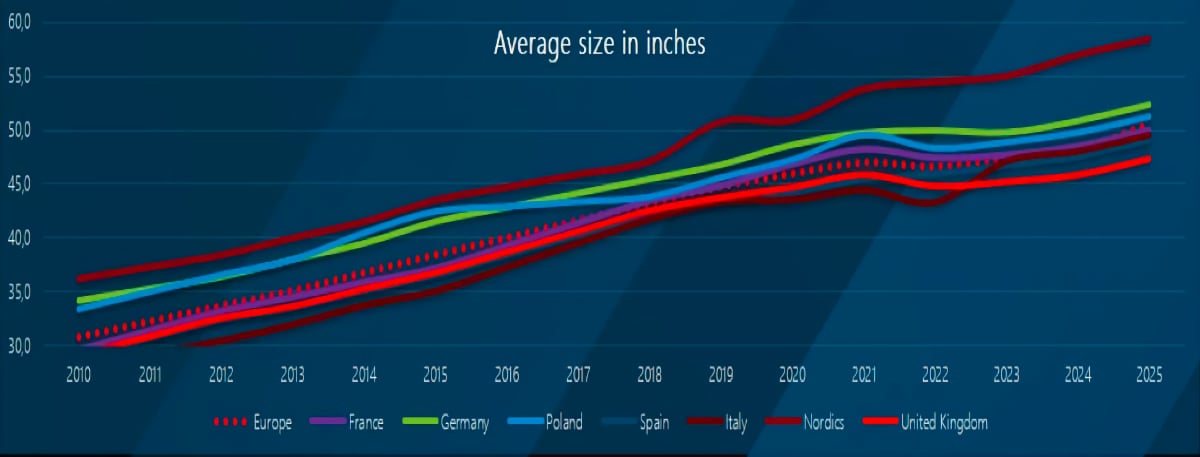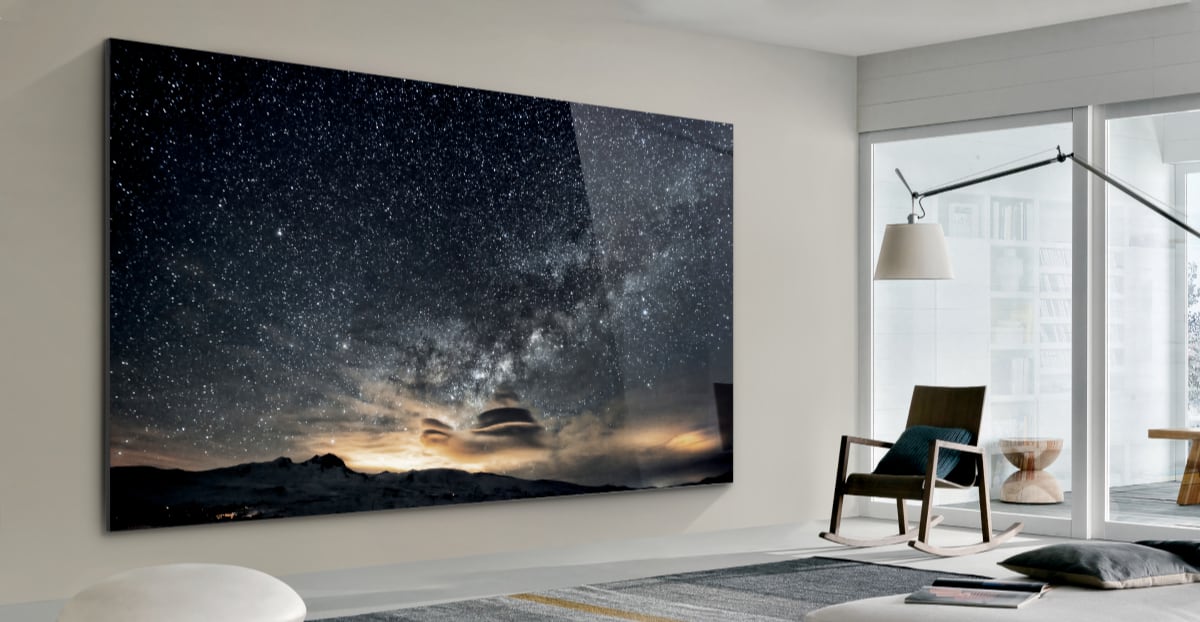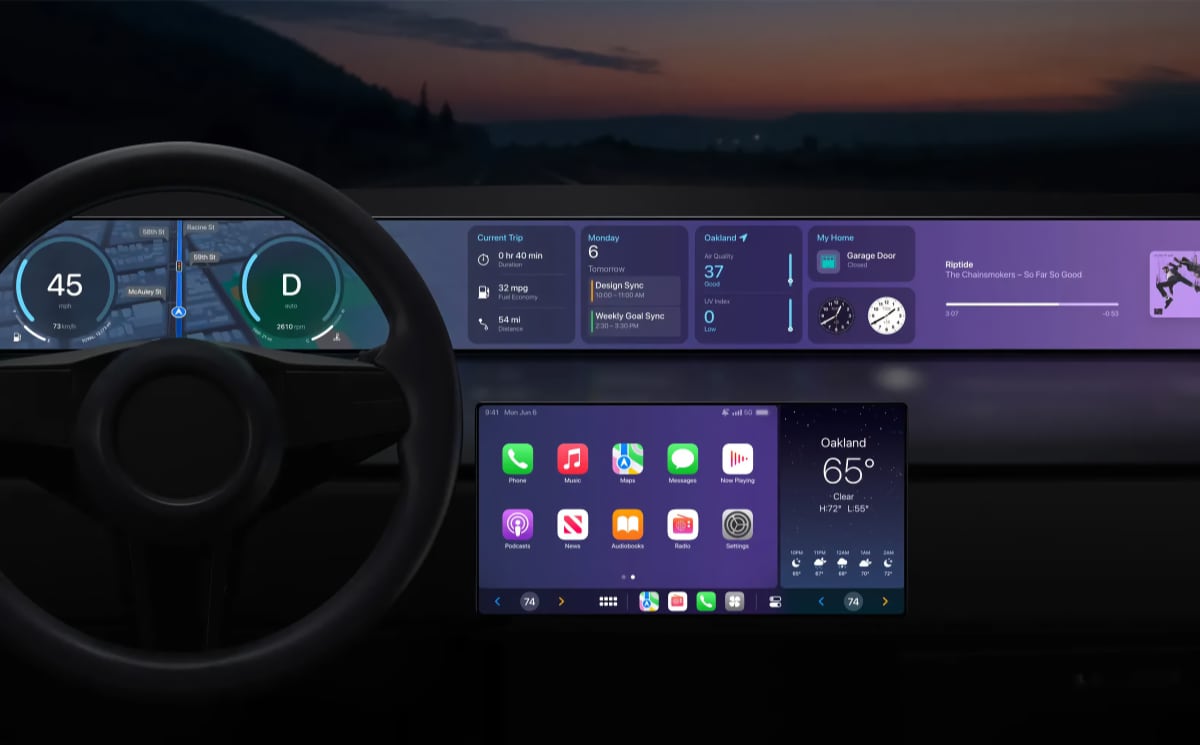When Europeans purchase a new TV, the average screen size increases by 1.2 inches annually. Consumers in the Nordic countries tend to buy the largest TVs, while the Brits buy them most frequently.
The average size of a new TV has risen from about 32 inches in 2010 to approximately 50 inches today across Europe, and this upward trend shows no signs of slowing down.
This data comes from market research firm GfK, which TCL recently presented at an event where the company launched its largest TV yet, measuring 115 inches.
Also read: Review: 115" TCL X955 Max / QM891G
TCL is leading the way with large 98-inch screens. During the presentation, the company stated that sales of these models have significantly exceeded expectations. The biggest challenge with large screens is fitting them into apartments. According to TCL, 98 inches is the maximum size that can fit vertically in a typical elevator.
Scandinavians buy bigger, brits buy more often
With an annual increase of 1.2 inches, it will not be long before 55 inches becomes the norm in Europe. The average size of TVs bough in the US surpassed 55 inches in 2021, according to other estimates.

Average size of new TVs bought in Europe over the years. Source: TCL/GfK
The largest TVs are sold in the four Nordic countries (Denmark, Finland, Norway, Sweden), where consumers in 2023 also spent the most per TV on average in Europe. The average price for a new TV in the Nordics is €703, while the average in the EU is €536. Germany follows closely at €698.
British consumers, however, purchase new TVs most frequently, averaging every 5.6 years. The longest replacement cycle is found in Germany, at 10.1 years, compared to the EU average of 8.0 years.
Prices for large TVs have dropped significantly over the past 5-10 years. The very large 98-inch TVs have become affordable within the past two years.








